Turning Trash Into Treasure - A Reality Check
In a world that seems to be drowning in waste, the idea of transforming trash into treasure is not just a catchy phrase; it's a necessary reality check. Every day, we produce mountains of garbage, and as the planet's resources dwindle, the urgency to rethink our consumption habits has never been more pressing. Imagine walking through a bustling city, where discarded items are not just seen as waste but as potential opportunities for creativity and sustainability. This article dives deep into the environmental, economic, and social implications of recycling and upcycling practices, highlighting how we can turn our waste into valuable resources.
Recycling is more than just a trend; it's a crucial practice that helps to reduce waste and conserve our precious natural resources. When we recycle, we are essentially giving materials a second chance at life. This process not only minimizes landfill waste but also significantly decreases the energy required to produce new products from raw materials. For instance, did you know that recycling aluminum saves up to 95% of the energy needed to create new aluminum from bauxite ore? That's a staggering number! By making recycling a part of our daily lives, we contribute to a healthier planet and a more sustainable economy. The benefits of recycling include:
- Reducing landfill waste and extending the lifespan of existing landfills.
- Conserving energy and natural resources, which helps combat climate change.
- Creating jobs in the recycling and manufacturing industries.
Upcycling takes the concept of recycling to another level. It’s about transforming discarded items into something new and useful, often with a touch of creativity. Think of it as giving a second life to your old belongings, where the only limit is your imagination. Upcycling not only reduces waste but also encourages a more sustainable lifestyle. For example, an old wooden pallet can become a stylish coffee table, while glass jars can be turned into beautiful candle holders. The positive effects on the environment are profound, as upcycling helps to:
- Reduce the demand for new materials, thereby conserving resources.
- Minimize waste, keeping more items out of landfills.
- Encourage creativity and innovation in everyday life.
There are countless upcycling projects that anyone can tackle, regardless of skill level. Here are a few popular ideas:
- Furniture Restoration: Breathing new life into old furniture not only saves money but also preserves history.
- Fashion Upcycling: Transforming old clothing into trendy new outfits is a fun way to embrace sustainable fashion.
Furniture restoration is a rewarding upcycling project that allows you to save money and preserve a piece of history. Whether it's an antique chair or a simple coffee table, restoring furniture can be a fulfilling experience. Techniques such as sanding, painting, or reupholstering can give old pieces a modern twist. Not only will you have a unique item in your home, but you'll also have a story to share about its transformation.
Fashion upcycling is another exciting avenue to explore. Instead of tossing out old clothes, consider how they can be reimagined into something new. This could be as simple as turning a pair of jeans into a stylish bag or sewing patches onto a jacket for a personalized touch. The world of sustainable fashion is growing, and with it, the number of creative possibilities.
Despite its many benefits, recycling and upcycling face several challenges. Contamination of recyclable materials can lead to entire batches being sent to landfills, which is a significant setback. Additionally, consumer behavior plays a crucial role; if people are not informed about the importance of recycling, they may not participate. Lastly, there is often a limited market demand for recycled materials, which can hinder the effectiveness of recycling programs.
Community-led initiatives are essential in promoting recycling and upcycling. These programs not only educate the public but also create a sense of community around sustainability. Successful initiatives can have a profound impact on local environments and economies, fostering a culture of responsibility and creativity.
Educational workshops are a fantastic way to foster awareness and skills related to recycling and upcycling. These workshops can teach community members how to repurpose items creatively and sustainably. By engaging with the community, these programs help to promote sustainable practices and encourage participation in recycling efforts.
Local recycling centers play a vital role in effective waste management. They provide the necessary infrastructure for recycling programs and serve as a hub for community engagement. Understanding how these centers operate can help residents appreciate their importance and encourage them to recycle more effectively.
Looking ahead, the future of waste management is bright, thanks to innovative technologies and practices. Emerging trends such as smart recycling bins and advanced sorting technologies are on the rise, making recycling more efficient than ever. As we continue to embrace these advancements, we can enhance our recycling and upcycling efforts globally, turning more trash into treasure.
Q: What is the difference between recycling and upcycling?
A: Recycling involves breaking down materials to create new products, while upcycling transforms discarded items into something new without breaking them down.
Q: How can I start upcycling at home?
A: Begin by looking at items you already have and think creatively about how they can be repurposed. There are many online resources and tutorials to guide you!
Q: Are there any local programs for recycling and upcycling?
A: Many communities have local initiatives and workshops. Check with your local recycling center or community center for more information.

The Importance of Recycling
Recycling is not just a trendy buzzword; it's a vital practice that can significantly impact our planet and our lives. Imagine a world where waste doesn't pile up in landfills, where resources are used efficiently, and where future generations can enjoy a cleaner, greener environment. This is the promise of recycling! By transforming used materials into new products, recycling conserves precious natural resources, reduces energy consumption, and minimizes pollution. It's like giving Mother Earth a much-needed hug!
One of the most compelling reasons to embrace recycling is its profound environmental benefits. When we recycle, we reduce the need for raw materials, which means fewer trees are cut down, fewer minerals are extracted, and less water is consumed. For instance, recycling just one ton of paper can save about 17 trees, 7,000 gallons of water, and 4,100 kilowatts of electricity! That's enough energy to power the average American home for about six months. Who wouldn't want to be part of such a game-changing effort?
Moreover, recycling plays a crucial role in combating climate change. By recycling materials, we can significantly cut down on greenhouse gas emissions. The process of manufacturing new products from recycled materials typically requires less energy than creating them from scratch. This means fewer fossil fuels burned and less pollution released into the atmosphere. It’s a win-win situation for both the planet and our health!
From an economic standpoint, recycling also has far-reaching implications. It creates jobs and stimulates the economy. According to the National Recycling Coalition, recycling and reuse activities in the U.S. account for over 1.1 million jobs and generate $236 billion in revenue annually. When we recycle, we're not just saving the environment; we're also investing in our economy and creating sustainable job opportunities.
However, the importance of recycling extends beyond just environmental and economic benefits; it also has social implications. Recycling fosters a sense of community and responsibility. When individuals and families participate in recycling programs, they become more aware of their consumption habits and the impact of their waste. This collective consciousness can lead to more sustainable practices, not just in recycling but in other areas of life as well. It’s like planting seeds of change that can grow into a forest of awareness!
In conclusion, recycling is crucial for a sustainable future. It conserves resources, reduces pollution, and creates economic opportunities. By making recycling a regular part of our lives, we can collectively contribute to a healthier planet and a more sustainable economy. So, the next time you toss something in the trash, pause for a moment and ask yourself: Can this be recycled? Your small action can lead to a big impact!
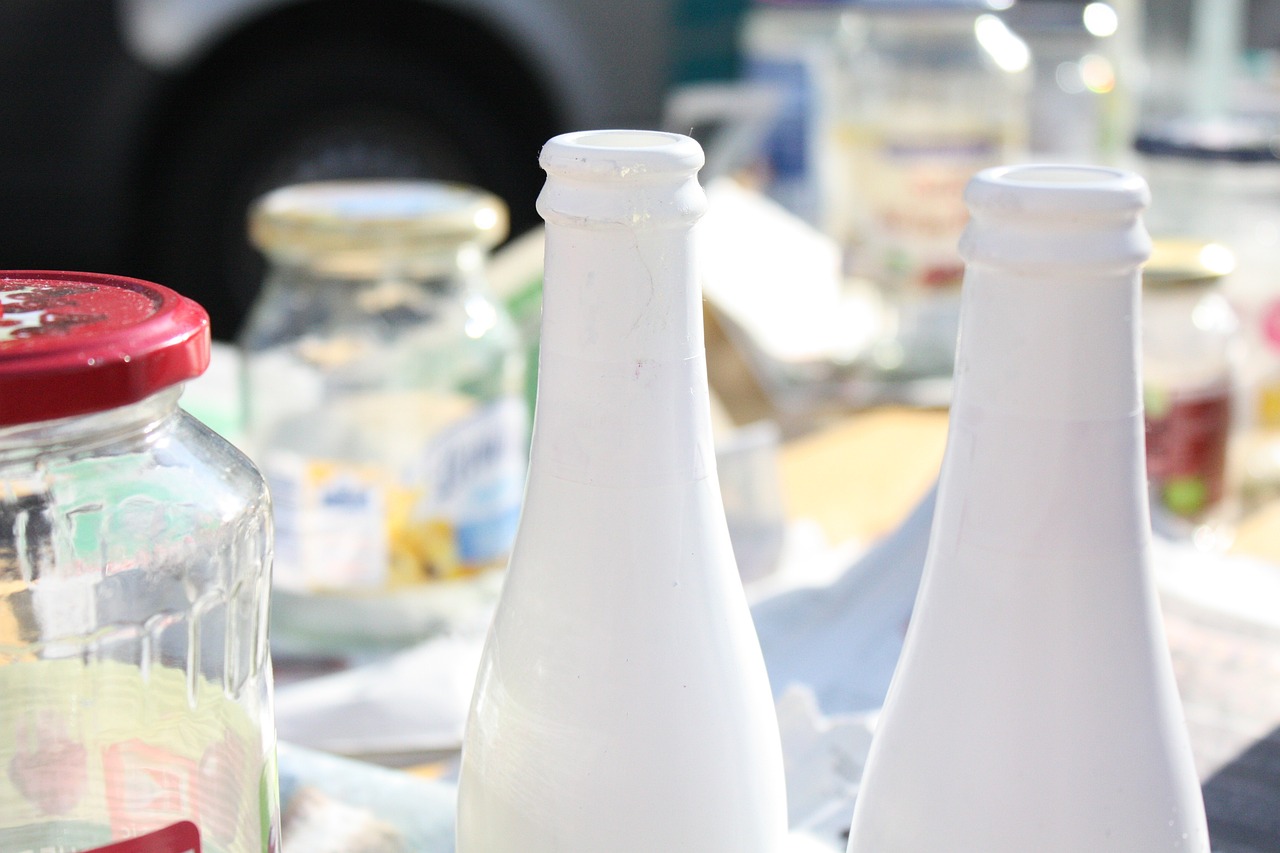
Upcycling: Creativity Meets Sustainability
In a world where waste seems to be an ever-growing problem, upcycling emerges as a beacon of hope, illuminating the path to a more sustainable future. Unlike traditional recycling, which often breaks materials down into their raw components, upcycling takes discarded items and transforms them into something entirely new and functional. This creative process not only minimizes waste but also sparks innovation, allowing us to see the potential in what we might otherwise consider trash. Imagine turning an old wooden pallet into a chic coffee table or transforming glass jars into beautiful light fixtures. The possibilities are endless!
One of the most exciting aspects of upcycling is how it encourages individuals to tap into their creativity. It’s not just about saving the planet; it's about expressing oneself through art and design. Upcycling can be seen as a form of storytelling, where each item carries its past while being reimagined for a new purpose. This practice not only fosters a sense of connection with our belongings but also promotes a culture of sustainability that can inspire others.
Moreover, upcycling has significant environmental benefits. By giving new life to old items, we reduce the demand for new resources, thus conserving energy and reducing greenhouse gas emissions associated with production. For instance, consider the impact of upcycling textiles. The fashion industry is notorious for its carbon footprint, but by reworking old clothes, we can significantly cut down on waste and pollution. In fact, according to the Environmental Protection Agency (EPA), the average American generates about 4.4 pounds of waste per day. If more people embraced upcycling, imagine how much waste we could prevent from ending up in landfills!
In addition to environmental advantages, upcycling can also have a positive economic impact. Many individuals have turned their upcycling hobbies into small businesses, selling unique, handcrafted items that resonate with eco-conscious consumers. This not only promotes a circular economy but also supports local artisans and entrepreneurs. Communities can benefit from these creative ventures, as they often encourage local shopping and reduce reliance on mass-produced goods.
To illustrate the various upcycling possibilities, let’s take a look at some common projects that showcase the beauty of creativity meeting sustainability:
| Upcycling Project | Description | Materials Used |
|---|---|---|
| Furniture Restoration | Transforming old furniture into stylish, functional pieces. | Wood, paint, fabric |
| Fashion Upcycling | Creating trendy outfits from old clothing. | Old clothes, sewing materials |
| Home Decor | Making decorative items from everyday waste. | Glass jars, bottles, paper |
As you can see, the art of upcycling is not just about reducing waste; it's a celebration of creativity and sustainability. By embracing this practice, we can all contribute to a healthier planet while expressing our unique style and personality. So, the next time you’re about to throw something away, pause for a moment and ask yourself: Can this be transformed into something beautiful? You might be surprised by what you can create!
What is upcycling?
Upcycling is the process of transforming waste materials or unwanted products into new materials or products of better quality or for better environmental value.
How is upcycling different from recycling?
While recycling involves breaking down materials to create new products, upcycling retains the original material's form and enhances it, often resulting in unique creations.
Can anyone upcycle?
Absolutely! Upcycling is for everyone. All you need is a bit of creativity and a willingness to experiment with materials you have on hand.
What are some simple upcycling projects I can start with?
You can start with projects like turning glass jars into storage containers, creating planters from old tires, or making tote bags from old t-shirts.

Common Upcycling Projects
Upcycling is not just a trend; it's a movement that encourages us to see the value in things we might otherwise throw away. Imagine turning an old wooden pallet into a chic coffee table or transforming glass jars into stylish candle holders! The beauty of upcycling lies in its ability to blend creativity with sustainability, allowing us to give new life to everyday items. Not only does this practice help reduce waste, but it also sparks joy and fosters a sense of accomplishment as we create something unique and functional.
One of the most popular upcycling projects is furniture restoration. Many people have old furniture pieces that are no longer in style or have seen better days. Instead of discarding these items, you can breathe new life into them with a little paint, some new hardware, or even by reupholstering. For example, an old chair can be transformed into a statement piece with a bold fabric choice, while a tired dresser can shine again with a fresh coat of vibrant paint. The possibilities are endless, and the satisfaction of seeing your hard work pay off is incredibly rewarding.
Another exciting avenue for upcycling is in the realm of fashion. Fashion upcycling takes old clothing and gives it a new twist, turning what could be considered "waste" into trendy outfits. Have you ever thought about converting an oversized t-shirt into a stylish tote bag? Or how about transforming a pair of worn-out jeans into a fashionable pair of shorts? These projects not only save money but also promote a more sustainable approach to fashion, reducing the demand for new clothing and helping to combat the environmental impact of the fast fashion industry.
For those who enjoy crafting, upcycling offers a plethora of options. You can create decorative items such as:
- Flower pots from tin cans
- Jewelry organizers from old picture frames
- Wall art from scrap wood and paint
These projects not only beautify your space but also serve as conversation starters, showcasing your creativity and commitment to sustainability. The thrill of discovering new uses for items that would otherwise be discarded can ignite your imagination and inspire others to join the upcycling movement.
In essence, upcycling is about seeing potential where others see waste. It's about using our creativity to solve problems and reduce our environmental footprint. Whether you're restoring furniture, revamping your wardrobe, or creating art, every small effort counts. So, gather those old items that are collecting dust, roll up your sleeves, and start transforming trash into treasure!
Q: What is upcycling?
A: Upcycling is the process of transforming waste materials or unwanted products into new materials or products of better quality or for better environmental value.
Q: How is upcycling different from recycling?
A: While recycling involves breaking down materials to create new products, upcycling focuses on repurposing existing items without breaking them down, often enhancing their value or functionality.
Q: Can upcycling save money?
A: Yes! Upcycling can significantly reduce costs since it allows you to create new items from things you already own, rather than purchasing new products.
Q: What are some easy upcycling projects for beginners?
A: Some easy projects include turning glass jars into storage containers, using old t-shirts for reusable shopping bags, or painting old furniture for a fresh look.
Q: How can I get started with upcycling?
A: Start by looking around your home for items you no longer use. Research online for creative ideas and tutorials, and don’t be afraid to experiment with your own designs!

Furniture Restoration
Furniture restoration is more than just a hobby; it's a passion that breathes new life into old pieces. Imagine walking into a room filled with forgotten treasures, each with its own history and story to tell. By restoring furniture, you not only save money but also preserve a piece of history that might otherwise end up in a landfill. The process can be both rewarding and transformative, allowing you to express your creativity while contributing to sustainability. So, what does it take to restore furniture, and why is it such a popular endeavor?
The journey of furniture restoration typically begins with a thorough assessment of the piece. Is it a vintage chair that has seen better days? Or perhaps a wooden table that’s lost its shine? Regardless of the condition, every piece has potential. The first step is to identify the materials used and the type of damage present. This can include anything from scratches and dents to more severe issues like structural damage. Once you've assessed the item, you can develop a restoration plan tailored to its needs.
One of the most crucial aspects of furniture restoration is choosing the right techniques and materials. Here are a few common methods:
- Stripping and Sanding: Removing old paint or varnish is essential for a fresh start. Sanding smooths out imperfections, making it easier to apply new finishes.
- Repairing Joints: Loose joints can compromise the integrity of the furniture. Using wood glue or clamps can help re-establish stability.
- Reupholstering: If the fabric is worn or outdated, consider reupholstering with a modern or vintage fabric that complements your style.
Once the restoration is complete, the satisfaction of seeing a once-neglected piece transformed into a stunning focal point is unparalleled. Not to mention, restored furniture often carries a unique character that mass-produced items lack. Think of it as giving your home a touch of personality and history, all while being eco-friendly.
However, it’s essential to approach furniture restoration with realistic expectations. Not every piece can be restored to its original glory, and some may require more effort and investment than anticipated. But even if a piece doesn't turn out perfectly, the experience itself is invaluable. It teaches patience, problem-solving, and creativity, skills that are beneficial beyond just furniture restoration.
Ultimately, furniture restoration is a beautiful blend of art and sustainability. It encourages us to look beyond the surface and appreciate the craftsmanship of bygone eras. So next time you come across an old chair or table, consider the possibilities. With a little effort and creativity, you can turn what might seem like trash into a true treasure.
1. What tools do I need for furniture restoration?
To start, you will need basic tools like sandpaper, a paintbrush, wood glue, clamps, and possibly a staple gun for upholstery projects. As you progress, you may want to invest in more specialized tools.
2. Can any piece of furniture be restored?
Most furniture can be restored to some extent, but the feasibility depends on the material and extent of damage. Solid wood pieces are often the easiest to restore, while particleboard may not hold up as well.
3. How long does the restoration process take?
The time required varies significantly based on the project's complexity. Simple refinishing might take a few hours, while more extensive restorations can take several days or even weeks.
4. Is it cost-effective to restore furniture?
Restoring furniture can be cost-effective compared to buying new, especially if you have the skills and tools to do it yourself. However, if you hire professionals, costs can add up quickly.

Fashion Upcycling
Fashion upcycling is an exciting and innovative way to breathe new life into your wardrobe while promoting sustainability. Imagine taking a pair of old jeans that have seen better days and transforming them into a trendy denim skirt or a stylish bag. It’s not just about saving money; it’s about making a statement and showing the world that you care about the environment. In a world where fast fashion dominates, upcycling offers a refreshing alternative, allowing individuals to express their creativity while reducing waste.
One of the most appealing aspects of fashion upcycling is its accessibility. You don’t need to be a professional designer to get started; with a few basic sewing skills and a bit of imagination, anyone can create unique pieces. Think of it like cooking; you can take leftover ingredients and whip up a delicious meal. Similarly, with some old fabric or clothing items, you can craft something entirely new and exciting. This not only diverts textiles from landfills but also encourages a more thoughtful approach to consumption.
Some popular methods of fashion upcycling include:
- Patchwork and Mending: Instead of tossing away torn or worn-out clothing, consider mending them with colorful patches or stitching. This adds character and can turn a simple shirt into a unique piece of art.
- Transforming Styles: Have a dress that you love but never wear? Why not turn it into a fashionable top or a cute set of throw pillows? The possibilities are endless!
- Accessorizing: Old scarves can be transformed into headbands, and outdated jewelry can be revamped into modern pieces. Upcycling accessories is a fun way to add flair to your outfits without breaking the bank.
Moreover, the rise of social media platforms has created a vibrant community of fashion upcyclers who share their projects, tips, and inspiration. Platforms like Instagram and Pinterest are teeming with creative ideas and tutorials, making it easier than ever to get inspired and start your own upcycling journey. You can find everything from DIY tutorials to before-and-after transformations that showcase the potential of upcycled fashion.
However, it’s essential to remember that fashion upcycling isn’t just about aesthetics; it’s also about making conscious choices. By choosing to upcycle, you’re actively participating in a movement that challenges the status quo of the fashion industry. You’re saying no to wastefulness and yes to creativity and sustainability. It’s a powerful statement that resonates with many who are looking to make a difference.
As we look to the future, the trend of fashion upcycling is expected to grow even more. With increasing awareness about the environmental impact of fast fashion, more people are seeking sustainable alternatives. Brands are also beginning to embrace upcycling, with many launching collections that feature upcycled materials. This shift not only benefits the planet but also creates a new market for innovative and unique clothing.
In conclusion, fashion upcycling is a beautiful blend of creativity, sustainability, and personal expression. It allows us to take control of our wardrobes, reduce waste, and make a statement about who we are and what we believe in. So, the next time you’re about to throw away an old piece of clothing, pause for a moment and consider how you might transform it into something extraordinary. After all, one person’s trash can truly become another person’s treasure!
Q: What materials are best for upcycling in fashion?
A: Almost any fabric can be upcycled! Popular choices include denim, cotton, and even old t-shirts. Look for items that are still in good condition, as they will be easier to work with.
Q: Do I need sewing skills to start upcycling?
A: While basic sewing skills can be helpful, many upcycling projects can be completed with no sewing required. You can use fabric glue, safety pins, or even no-sew techniques to create new items.
Q: Where can I find inspiration for upcycling projects?
A: Social media platforms like Instagram and Pinterest are great places to find upcycling inspiration. You can also check out local workshops or community groups that focus on sustainable fashion.
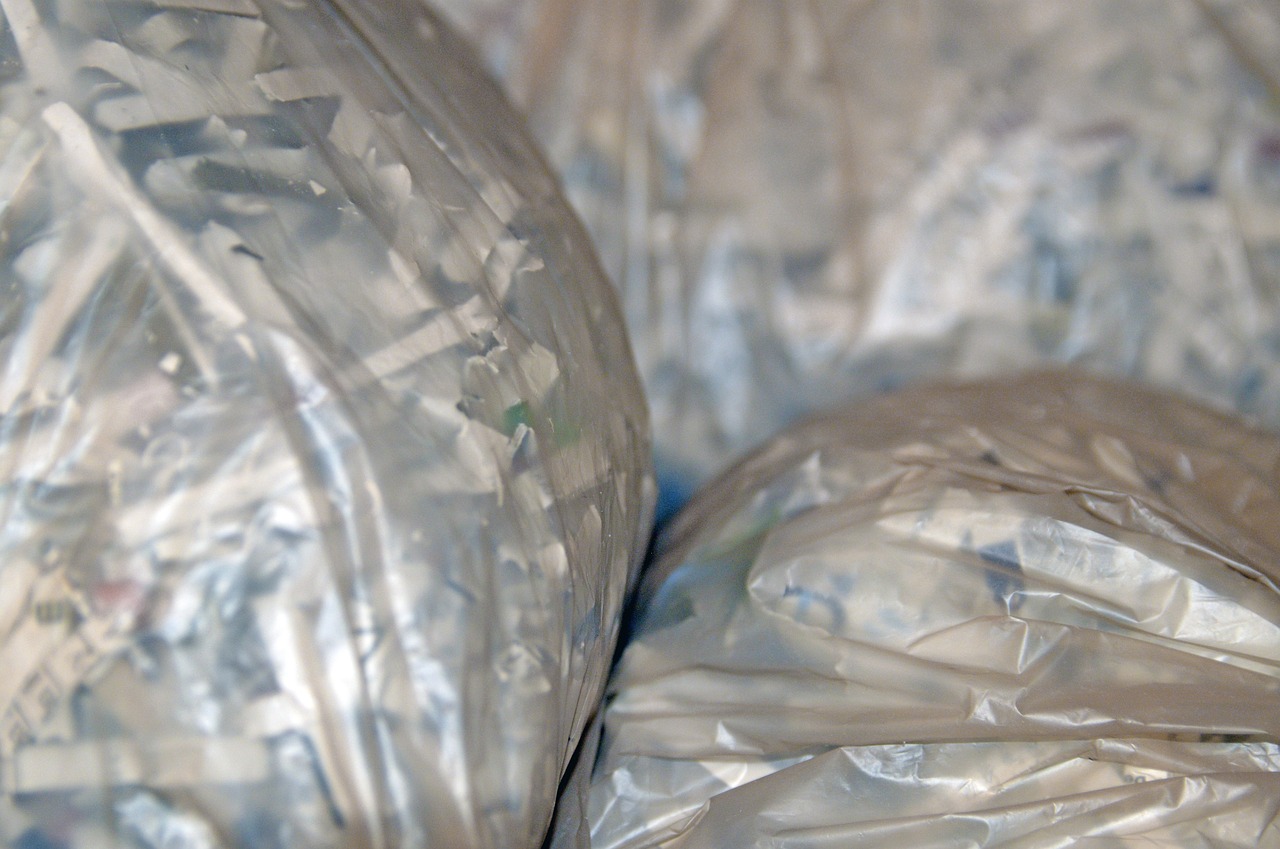
Challenges in Recycling and Upcycling
While the concepts of recycling and upcycling are rooted in the noble goal of sustainability, they are not without their challenges. One of the most significant hurdles is **contamination**. When recyclable materials are mixed with non-recyclables, it can lead to entire batches being discarded. For instance, if a pizza box with grease stains ends up in the recycling bin, it can spoil the whole load of paper products. This is why it's crucial for individuals to understand what can and cannot be recycled.
Another challenge is **consumer behavior**. Many people still view recycling as a chore rather than a responsibility. The lack of awareness about the importance of recycling often leads to apathy. According to recent studies, over 30% of recyclable materials end up in landfills simply because people do not take the time to sort their waste properly. This is where education plays a vital role; if consumers are educated about the environmental impact of their actions, they may be more inclined to participate actively in recycling efforts.
Additionally, the **market demand for recycled materials** poses a challenge. In many cases, the cost of producing new materials is lower than recycling old ones. For example, virgin plastics are often cheaper to produce than recycled plastics due to the fluctuating prices of oil and the costs associated with processing recycled materials. This economic disparity can discourage businesses from investing in recycling technologies and programs, ultimately affecting the overall effectiveness of recycling initiatives.
Moreover, there are **logistical issues** related to collection and processing. Not all communities have access to efficient recycling services, which can lead to lower participation rates. In some areas, the infrastructure for recycling simply does not exist, making it difficult for residents to engage in sustainable practices. Even in places with established programs, inconsistent pickup schedules and lack of clear communication can frustrate efforts to recycle effectively.
Lastly, we cannot overlook the **emotional and psychological barriers** that people face. Many individuals feel overwhelmed by the sheer volume of waste generated daily and may believe that their efforts are insignificant in the grand scheme of things. This mindset can be a significant barrier to engaging in recycling and upcycling practices. It’s essential to remind ourselves that every little action counts, and collectively, these actions can lead to substantial change.
In summary, while recycling and upcycling offer incredible potential for reducing waste and promoting sustainability, they also face a myriad of challenges that need to be addressed. By focusing on education, improving infrastructure, and fostering a culture of responsibility, we can overcome these obstacles and turn the tide toward a more sustainable future.
- What is the difference between recycling and upcycling? Recycling involves breaking down materials to create new products, while upcycling transforms discarded items into new, often more valuable products without breaking them down.
- How can I reduce contamination in my recycling? Make sure to rinse out containers and separate recyclables from non-recyclables. Check local guidelines for specific instructions.
- Are there any economic benefits to recycling and upcycling? Yes, recycling can create jobs, reduce waste disposal costs, and conserve resources, while upcycling can lead to unique products that may be sold for profit.
- How can communities improve recycling rates? Communities can implement educational programs, provide accessible recycling bins, and organize clean-up events to raise awareness and participation.
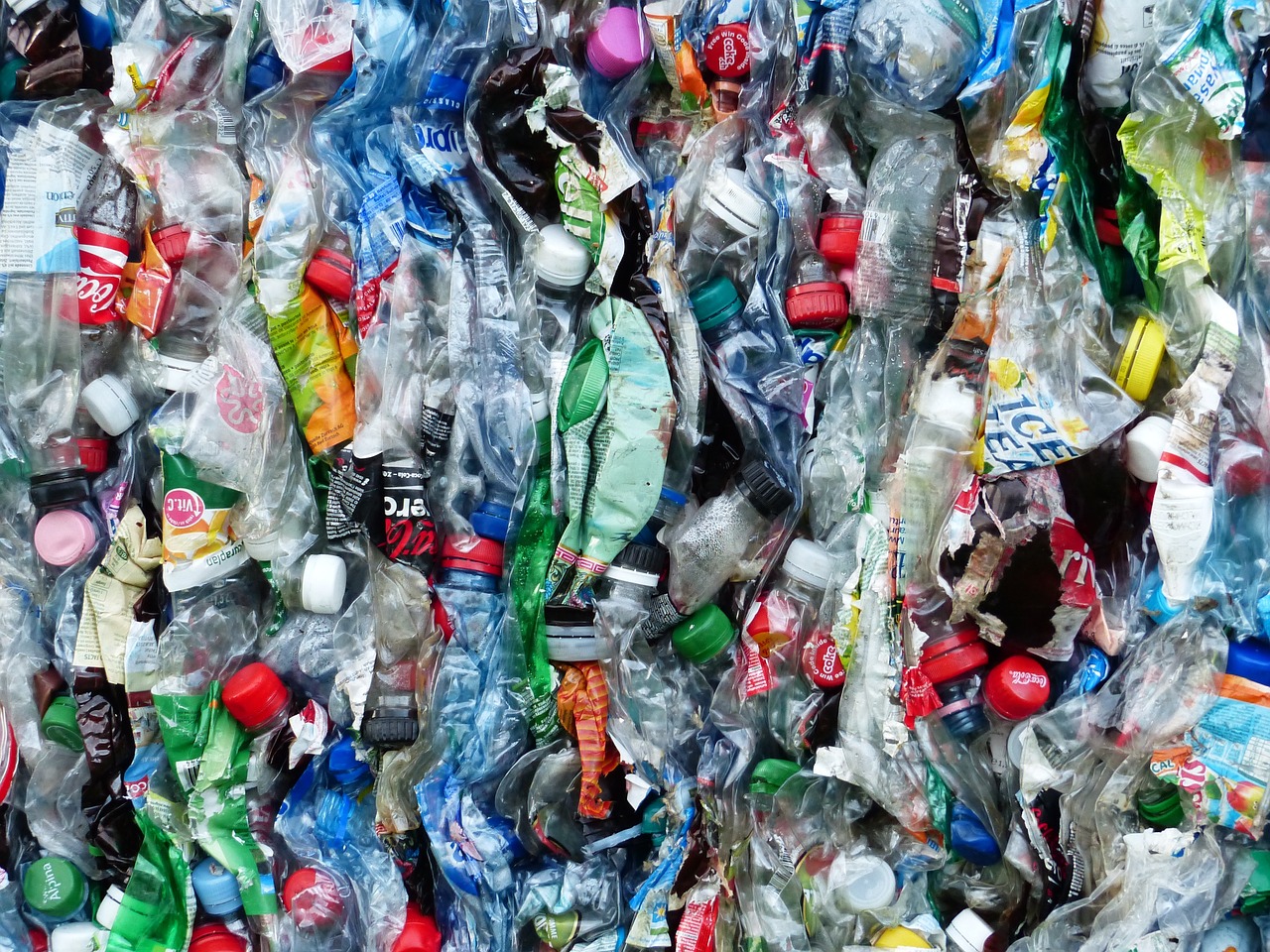
Community Initiatives and Programs
Community-led initiatives are the heartbeat of effective recycling and upcycling efforts. They not only foster a sense of belonging but also empower individuals to take action against wastefulness. Imagine a neighborhood where every resident is engaged in transforming trash into treasure; that’s the kind of community spirit we’re aiming for! Programs that encourage recycling and upcycling have a profound impact on local environments and economies, creating a ripple effect that can inspire change far beyond the community’s borders.
Take, for instance, community clean-up events. These gatherings not only clear litter from public spaces but also serve as a platform for education on the importance of recycling. Participants often leave with a newfound appreciation for their surroundings and a commitment to sustainable practices. Moreover, these events can be coupled with workshops that teach participants how to upcycle items they might otherwise discard. For example, a simple workshop could show how to turn glass jars into decorative candle holders, merging creativity with sustainability.
Another significant aspect of community initiatives is the establishment of local recycling centers. These centers act as the backbone of recycling efforts, providing residents with easy access to recycling facilities. They often serve as educational hubs, offering resources and information on how to recycle correctly. The importance of proper recycling cannot be overstated; contamination of recyclable materials can lead to entire batches being sent to landfills. Local centers help mitigate this issue by educating the public on what can and cannot be recycled. For instance, many people are surprised to learn that items like greasy pizza boxes or plastic bags can contaminate recycling streams.
In addition, community programs can also focus on promoting sustainable consumption habits. By organizing events such as swap meets or clothing exchanges, communities can encourage individuals to rethink their purchasing habits. Instead of buying new items, residents can trade what they no longer need, giving a second life to perfectly good products. This not only reduces waste but also fosters a spirit of sharing and cooperation among community members.
One shining example of a successful community initiative is the “Green Neighborhoods” program, which partners with local governments and organizations to create sustainable practices at the grassroots level. This program has led to significant increases in recycling rates and a reduction in landfill waste. Participants are often motivated by the tangible benefits they see in their neighborhoods, such as cleaner parks and more vibrant public spaces. It’s a win-win situation where the community thrives, and the planet benefits!
Ultimately, the success of these initiatives hinges on active participation and collaboration among community members. When people come together with a shared goal, incredible things can happen. Not only does this foster a sense of unity, but it also cultivates a culture of sustainability that can be passed down to future generations. So, if you’re looking for ways to get involved, consider reaching out to local organizations or starting your own initiative. Remember, every small action counts in the journey toward a greener future!
- What are some examples of community-led recycling initiatives? Community clean-up events, educational workshops, and local recycling centers are great examples.
- How can I start an upcycling project in my community? Gather a group of interested individuals, choose a project, and host a workshop to share skills and ideas.
- Why is it important to educate the community about recycling? Education helps reduce contamination and increases the effectiveness of recycling programs.
- Can local governments support community recycling initiatives? Absolutely! Many local governments offer grants, resources, and partnerships to support these programs.
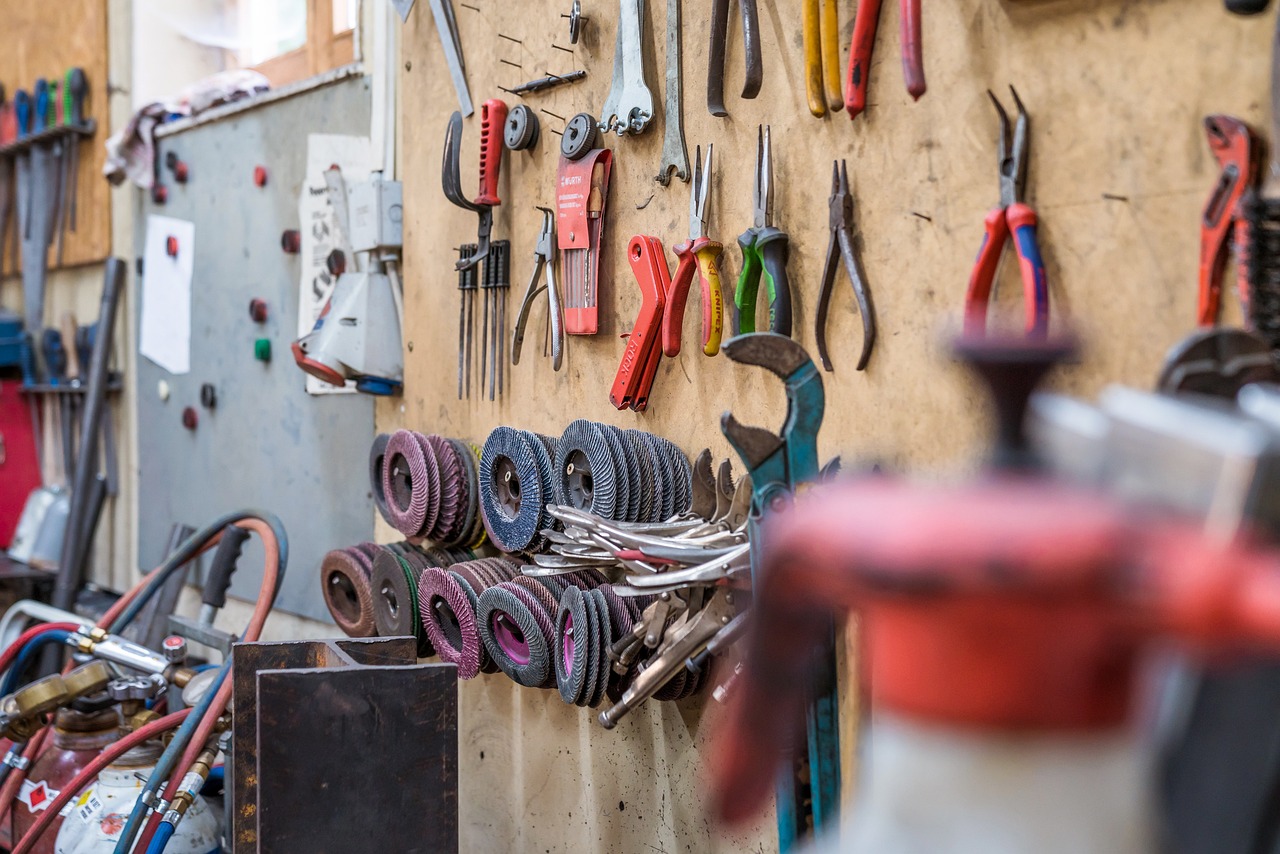
Educational Workshops
In today's fast-paced world, where environmental concerns are at an all-time high, have emerged as a beacon of hope for promoting sustainable practices like recycling and upcycling. These workshops serve as interactive platforms, bringing together individuals from various backgrounds to learn about the importance of waste management and the creative ways to repurpose items that would otherwise end up in landfills. Imagine a room filled with enthusiastic participants, each eager to discover how they can make a difference—this is the essence of an educational workshop!
One of the most significant advantages of these workshops is their ability to foster community engagement. Participants not only gain knowledge but also connect with like-minded individuals who share a passion for sustainability. This sense of community can lead to collaborative projects, where ideas are exchanged, and skills are honed. Workshops often cover a range of topics, from the basics of sorting recyclables to advanced upcycling techniques, making them suitable for all skill levels.
Moreover, these workshops often incorporate hands-on activities, allowing participants to apply what they've learned in real-time. For instance, attendees might bring in old clothing or furniture and learn how to transform these items into something new and functional. This practical approach not only reinforces the concepts taught but also instills a sense of accomplishment and creativity. It’s like turning a mundane Saturday afternoon into a treasure hunt where the treasure is hidden in your very own closet!
To illustrate the impact of educational workshops, let’s take a look at a few key benefits:
- Hands-on Learning: Participants engage in practical activities that enhance their understanding of recycling and upcycling.
- Community Building: Workshops foster connections among participants, encouraging collaboration and support.
- Skill Development: Attendees acquire new skills that empower them to implement sustainable practices in their own lives.
- Awareness Raising: Workshops increase awareness about the environmental impact of waste and the importance of sustainability.
In addition to the immediate benefits, educational workshops can have a long-lasting impact on the community. As participants return to their homes equipped with new knowledge and skills, they can inspire their families and friends to adopt similar practices. This ripple effect can lead to a more significant cultural shift towards sustainability within the community. Imagine the possibilities if everyone began to think twice before throwing something away!
In conclusion, educational workshops are not just about learning; they are about creating a movement. They empower individuals with the tools and knowledge they need to turn their waste into valuable resources, fostering a culture of sustainability that can have profound effects on our environment. So, if you're looking to make a difference, consider attending or even organizing a workshop in your community. After all, every small step counts in the journey towards a greener planet!
Here are some common questions people have about educational workshops related to recycling and upcycling:
- What types of workshops are available? Workshops can range from basic recycling education to advanced upcycling techniques, focusing on various materials like paper, plastic, and textiles.
- Who can attend these workshops? Workshops are generally open to all ages and skill levels, making them accessible to anyone interested in learning more about sustainability.
- Do I need to bring anything to the workshop? Some workshops may request participants to bring specific items for hands-on projects, such as old clothes or household items.
- How can I find workshops in my area? You can check local community centers, environmental organizations, or online platforms that list upcoming workshops in your region.
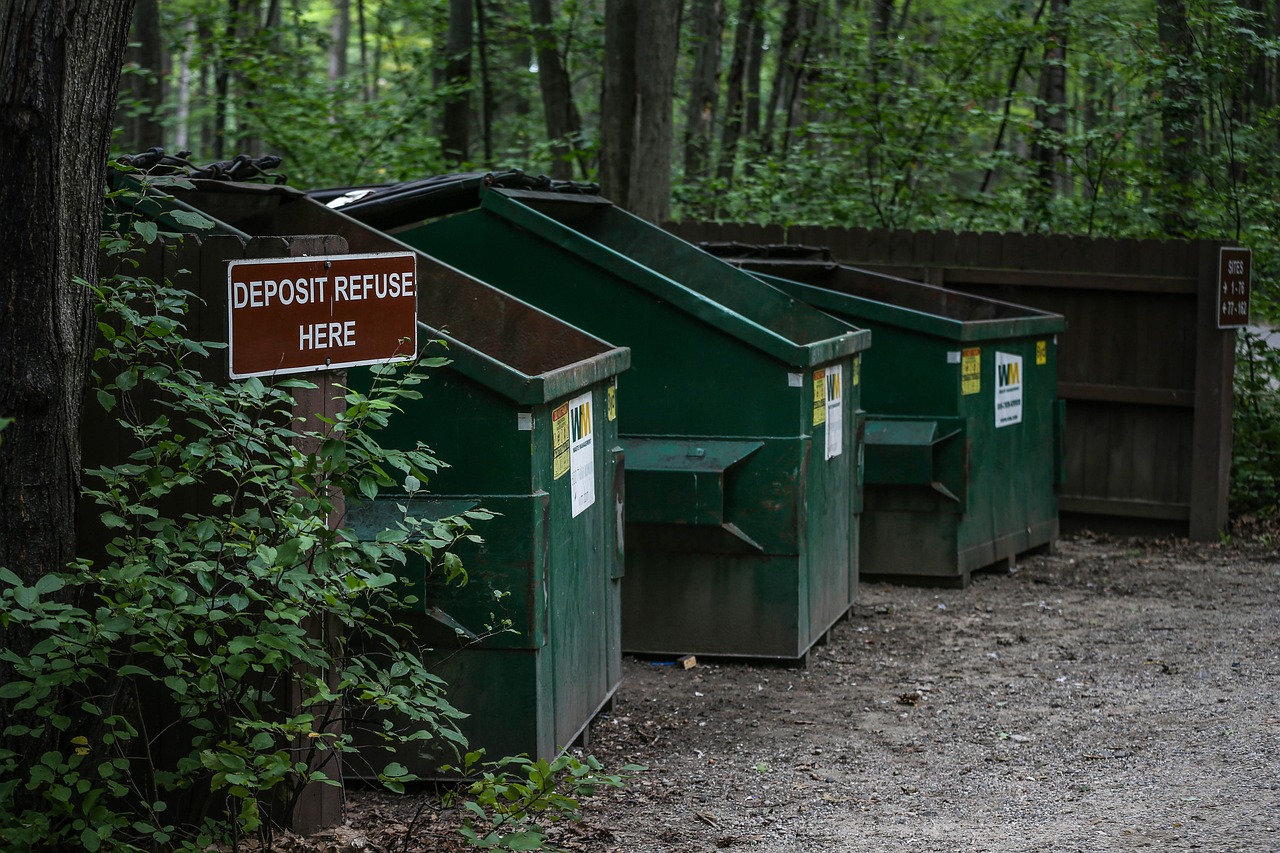
Local Recycling Centers
Local recycling centers are the unsung heroes of effective waste management. They serve as crucial hubs where community members can drop off their recyclables, ensuring that materials like paper, plastics, metals, and glass are processed and transformed into new products. These centers not only help reduce the amount of waste that ends up in landfills but also play an essential role in educating the public about the importance of recycling. Imagine a bustling center where individuals from all walks of life come together, motivated by a shared goal of sustainability. It’s a place where trash truly becomes treasure, and every item deposited is a step toward a cleaner planet.
These centers operate under various models, often funded by local governments or non-profit organizations. They might offer different services, such as:
- Drop-off points for recyclables
- Collection services for larger items
- Educational programs to teach the community about recycling practices
In many cases, local recycling centers also collaborate with businesses and schools to create comprehensive recycling programs that encourage participation and boost recycling rates. They often provide resources like bins and signage to help guide proper disposal practices. Furthermore, these centers can create job opportunities within the community, contributing to the local economy while promoting environmental stewardship.
One of the significant advantages of local recycling centers is their ability to adapt to the needs of the community. For instance, some centers may focus on specific materials that are prevalent in their area. A center in a coastal town might prioritize the recycling of fishing nets and other marine debris, while an urban center might focus on electronic waste. This tailored approach ensures that the recycling efforts are both effective and relevant to the community’s needs.
However, it’s essential to understand that the success of these centers largely depends on community participation. When residents actively engage in recycling, it not only boosts the efficiency of the center but also fosters a culture of sustainability. Imagine walking into a local recycling center and seeing a vibrant community of people who are passionate about making a difference. This collective effort amplifies the impact of recycling initiatives, making it clear that every small action contributes to a larger goal.
In conclusion, local recycling centers are vital for effective waste management and sustainability. They serve as educational hubs, community gathering places, and practical solutions to our waste problems. By supporting these centers, we can all play a part in turning trash into treasure, paving the way for a greener future.
Q: What materials can I recycle at my local recycling center?
A: Most local recycling centers accept common materials, such as paper, cardboard, glass, metals, and certain plastics. It's best to check with your specific center for their accepted items.
Q: Do I need to clean my recyclables before dropping them off?
A: Yes, it's generally recommended to rinse out containers and remove any food residue to prevent contamination, which can hinder the recycling process.
Q: Are there any fees associated with using local recycling centers?
A: Many local recycling centers are free to use, but some may charge fees for specific items, especially electronic waste or large appliances. Always check in advance.
Q: How can I get involved with my local recycling center?
A: You can volunteer, participate in community clean-up events, or attend educational workshops hosted by the center to learn more about recycling and sustainability.
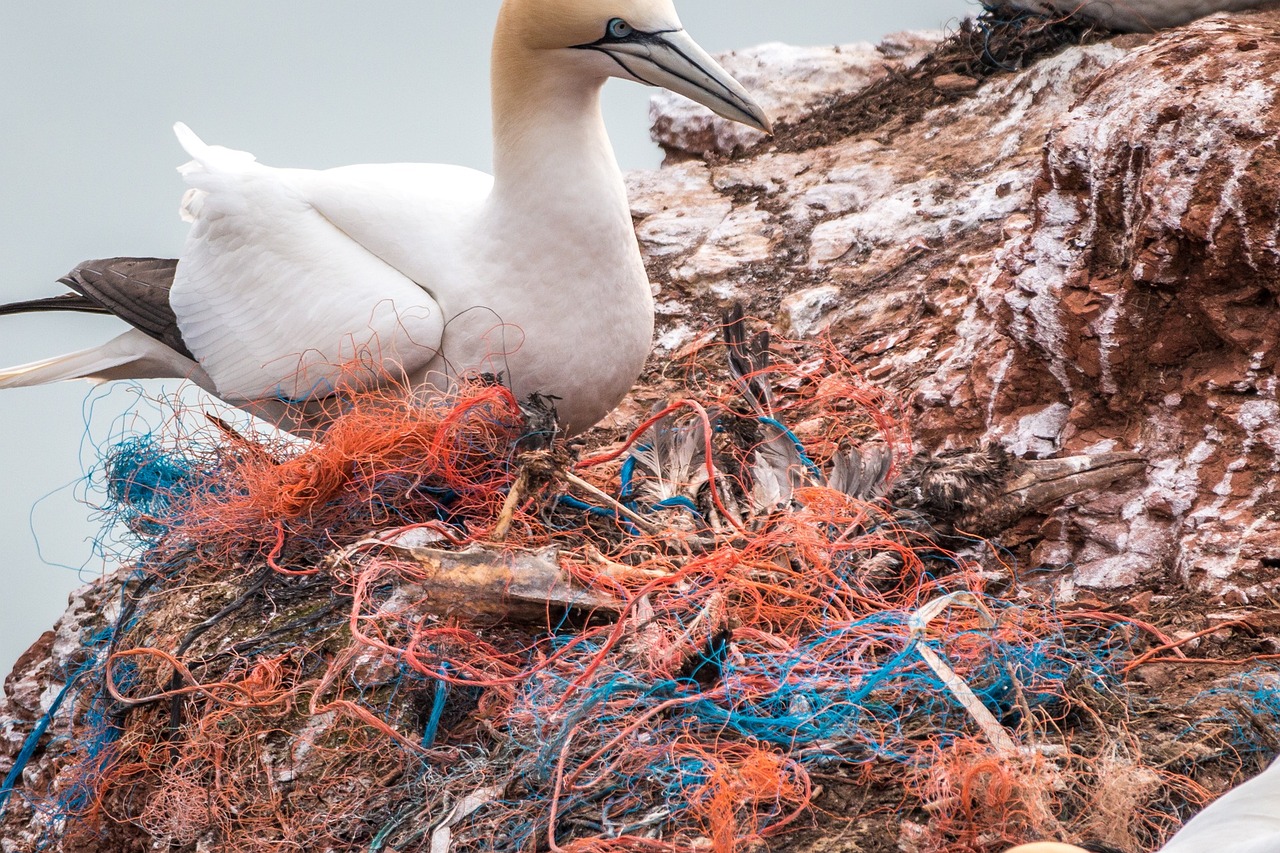
The Future of Waste Management
The future of waste management is not just about dealing with trash; it’s about transforming our relationship with waste. As we delve into the complexities of our modern world, it becomes evident that innovative technologies and sustainable practices are paving the way for a cleaner, greener future. Imagine a world where waste is not merely discarded but is seen as a valuable resource waiting to be reclaimed. This vision is becoming a reality thanks to advancements in recycling technologies, waste-to-energy processes, and community engagement.
One of the most exciting developments in waste management is the rise of smart waste management systems. These systems leverage technology to optimize the collection and processing of waste. For instance, cities are now using sensors in waste bins to monitor fill levels, allowing for more efficient collection routes and reducing unnecessary pickups. This not only saves on fuel and labor costs but also minimizes the carbon footprint associated with waste collection. Furthermore, integrating data analytics helps municipalities better understand waste generation patterns, enabling them to tailor their services to meet the community's needs.
Another significant trend is the emphasis on circular economy principles. Unlike the traditional linear economy, where products are made, used, and disposed of, the circular economy focuses on keeping materials in use for as long as possible. This means designing products for durability, reparability, and recyclability. Companies are increasingly adopting these principles, leading to a surge in eco-friendly products and sustainable business practices. For example, brands are now creating take-back programs that encourage consumers to return used products for recycling or refurbishment, effectively closing the loop on product life cycles.
Moreover, the concept of waste-to-energy is gaining traction as a viable solution to manage waste while generating energy. This process involves converting non-recyclable waste materials into usable heat, electricity, or fuel through various methods, including combustion and anaerobic digestion. Not only does this reduce the volume of waste sent to landfills, but it also provides a renewable source of energy. Countries like Sweden and Denmark are leading the way, with advanced waste-to-energy technologies that significantly contribute to their energy grids.
However, the future of waste management is not solely reliant on technology and innovation; it also hinges on community engagement and education. As individuals become more aware of their consumption habits and the impact of waste on the environment, grassroots movements are emerging. Community-led initiatives, such as local recycling programs and upcycling workshops, are empowering citizens to take action. These programs not only promote sustainable practices but also foster a sense of community and shared responsibility.
In conclusion, the future of waste management presents a myriad of opportunities to reshape how we view and handle waste. Through the integration of smart technologies, the adoption of circular economy principles, and active community involvement, we can create a sustainable future where waste is minimized, resources are conserved, and our environment is protected. The journey may be long, but with collective effort and innovation, we can transform trash into treasure.
- What is the circular economy? The circular economy is an economic model that emphasizes sustainability by keeping resources in use for as long as possible through recycling, refurbishing, and sharing.
- How do smart waste management systems work? Smart waste management systems use technology such as sensors and data analytics to optimize waste collection routes and monitor waste levels in bins.
- What is waste-to-energy? Waste-to-energy is a process that converts non-recyclable waste materials into usable energy, reducing landfill waste while generating renewable energy.
- How can I get involved in local recycling initiatives? You can participate in local recycling initiatives by joining community groups, attending workshops, and promoting recycling practices within your neighborhood.
Frequently Asked Questions
- What is the difference between recycling and upcycling?
Recycling involves processing materials to create new products, while upcycling is about creatively reusing items to transform them into something of higher value or purpose. Think of recycling as breaking something down to build it back up, whereas upcycling is like giving old items a new lease on life without the need for extensive processing.
- Why is recycling important for the environment?
Recycling helps reduce waste in landfills, conserves natural resources, and lowers greenhouse gas emissions. It’s like giving Mother Earth a little TLC by making sure we use what we have wisely, rather than just tossing it aside. Every item recycled is a step toward a cleaner planet!
- Can upcycling be done on a budget?
Absolutely! Upcycling is often about creativity rather than spending money. You can transform everyday items you already have at home into something new and beautiful without breaking the bank. Think of it as a treasure hunt in your own living space!
- What are some easy upcycling projects for beginners?
Some simple projects include turning glass jars into decorative vases, using old t-shirts to create tote bags, or repurposing wooden pallets into furniture. These projects not only help reduce waste but also allow you to express your creativity!
- How can communities promote recycling and upcycling?
Communities can organize educational workshops, create local recycling centers, and host upcycling events. By fostering a culture of sustainability, communities can inspire individuals to participate in recycling efforts and get creative with upcycling.
- What challenges do recycling and upcycling face?
Challenges include contamination of recyclable materials, lack of consumer awareness, and fluctuating market demand for recycled products. It’s like trying to make a delicious smoothie but finding that some of your fruits are spoiled; it can really impact the outcome!
- What is the future of waste management?
The future of waste management looks promising with innovative technologies such as AI-based sorting systems and advancements in biodegradable materials. These developments aim to enhance recycling and upcycling efforts, making it easier for everyone to contribute to a sustainable future.



















